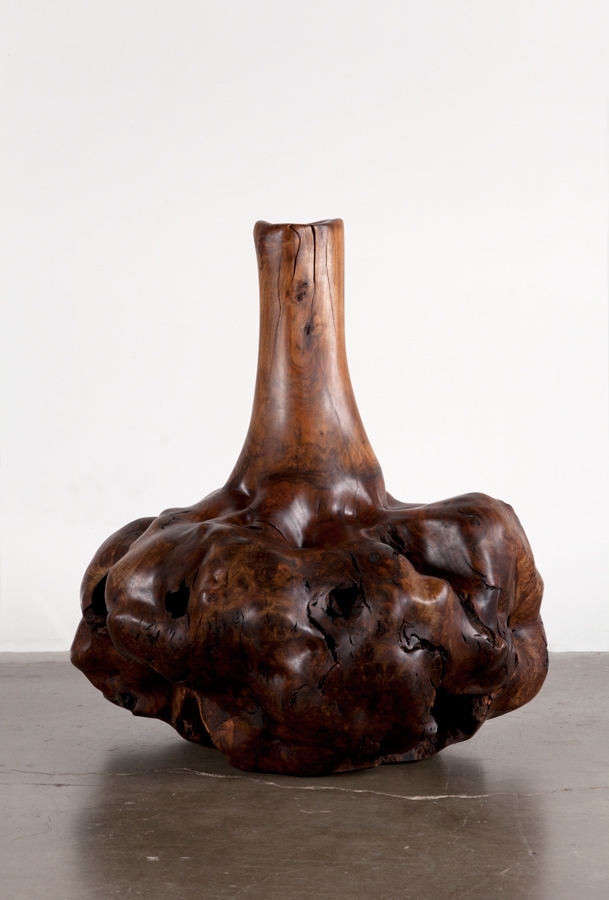An artist like Alma Allen causes certain categorical predicaments for those who try to write about the extraordinary objects he has been quietly making for over two decades. He is a self-taught artist who is far from Outsider, a craftsman who makes furniture as well as functionless objects, an artist who in 2013 was plying his trade at the Echo Park Craft Fair and in 2014 was lauded as a highlight of the Whitney Biennial, and a private figure whose troubled backstory adds gravitas to his outwardly quixotic creations.
The press release for this, Allen’s first exhibition with Blum & Poe and his first solo show in several years, wastes no time before rehashing his mythology: ‘A teenage runaway without a high school degree, the self-taught artist began an initial period of intense hand carving using salvaged materials while often homeless.’ Admittedly, it is a terrific story – how Allen was so desperately poor that he sold knickknacks on the streets of SoHo, New York, during the 1990s, and was lucky enough to be taken under the wing of some artworld tastemakers.
Putting the legend before the work, however, does Allen a great disservice, because at his best he is an artist capable of making sculptures that are singularly off-kilter and uncanny. Made with a combination of digital and manual processes, his artworks may look at first like the freakish spawn of nature: smooth lumps of driftwood, perhaps, or pieces of eroded rock, or unlikely fossils. But then odd details like a circular plug sticking out of a hunk of leathery Claro walnut or two neat pegs protruding from an undulating wedge of white marble dispatch all notions of naturalness and reveal them to be calculatedly manmade. Like the famous laboratory mouse with a human ear growing on its back, these sculptures can seem just plain wrong, and brilliantly so. They are aberrations from science fiction rather than empathic expressions of organic materiality.
Others, however, land too squarely (for my taste) on the side of formal satisfaction and balance. This exhibition could gainfully be edited to produce a much more dynamic artistic statement. But here’s part of the puzzle with Allen: it’s by no means clear exactly what he wants to say with these objects. My suspicion is that he is mainly happy to make them, and to have people buy them when he is done. All these objects are listed as ‘Not Yet Titled’ – the titling, apparently, to be done by their eventual owners.
If works of art are, as Arthur Danto has it, embodied meanings, then Allen’s diffidence in claiming his stake in the creation of those meanings might give us pause. Is it terribly old-fashioned even to ask if these objects are indeed art, in Danto’s definition? I don’t think so – not because of hierarchical reasons (I would argue, anyway, that a good piece of craft is worth more than a bad piece of art) but because that distinction tells us how much we can expect from the object we’re looking at, and the terms on which it can succeed and fail.
This article was first published in the March 2015 issue.
